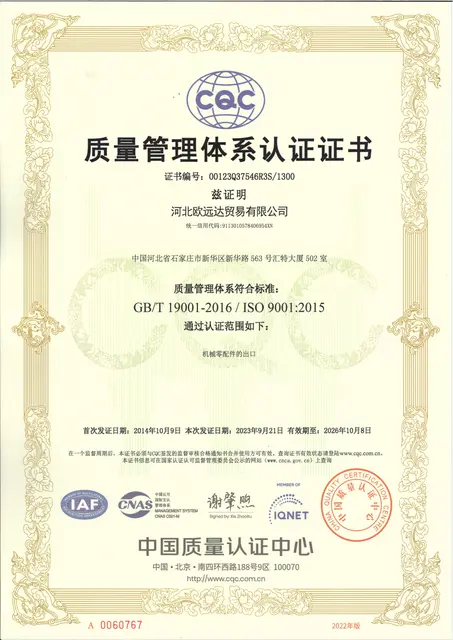Mobile:+86-311-808-126-83
Email:info@ydcastings.com
melting aluminum for casting
Melting Aluminum for Casting A Comprehensive Guide
Aluminum is one of the most versatile metals employed in various industrial applications, particularly in casting. The process of melting aluminum for casting is vital for producing components with precise shapes and structures. This article will delve into the methods and considerations involved in melting aluminum for casting purposes.
Understanding Aluminum Melting
Aluminum has an exceptionally low melting point, around 660 degrees Celsius (1220 degrees Fahrenheit), which makes it easier to work with compared to other metals. This characteristic not only allows for efficient energy use during the melting process but also enables a variety of casting techniques, such as sand casting, die casting, and investment casting.
The Melting Process
The melting of aluminum for casting generally involves the following key steps
1. Preparation of Materials Before melting, it’s essential to prepare aluminum scrap or ingots. Cleaning the aluminum by removing contaminants like paint, oil, or other residues ensures the quality of the final product.
2. Choosing a Furnace There are several types of furnaces used for melting aluminum, including - Induction Furnaces These are energy-efficient and provide excellent temperature control, which is crucial for ensuring the uniform melting of aluminum alloys. - Gas-Fired Furnaces Often used for larger batches, gas-fired furnaces are less expensive to operate but may require additional air pollution controls. - Electric Resistance Furnaces These offer precise temperature regulation but can be costly to run. The choice of furnace depends on the scale of production, budget, and specific alloy requirements.
3. Melting the Aluminum The furnace is heated to the required temperature to melt the aluminum. Care must be taken during this phase to avoid overheating, as excessive heat can lead to oxidation and the degradation of the metal's properties.
melting aluminum for casting

4. De-slagging After the aluminum is melted, any impurities that have floated to the surface of the molten metal — known as dross — must be removed. This step is crucial as it helps maintain the quality of the alloy and prevents defects in the final casting.
5. Pouring Once the aluminum is molten and free of impurities, it is poured into molds. Molds can be made from various materials, including sand or metal, depending on the casting method used. Each method has its advantages and applications, depending on the desired finish, strength, and production volume of the components.
Considerations in Melting Aluminum
When melting aluminum for casting, several factors should be considered
- Alloy Composition Different aluminum alloys have varying melting points and properties. Understanding the specific requirements of the alloy being used is essential for achieving the desired mechanical properties in the final product. - Environmental Considerations Proper ventilation and environmental controls are necessary to manage emissions and fumes that arise during melting. Utilizing efficient furnaces and employing recycling practices can also contribute to more sustainable operations.
- Safety Protocols Aluminum melting involves high temperatures, and safety precautions must be in place. This includes personal protective equipment (PPE) for workers, ensuring fire safety measures, and regular maintenance of equipment to prevent accidents.
Conclusion
Melting aluminum for casting is a critical process in various industries, from automotive to aerospace. Understanding the methods, equipment, and considerations involved not only leads to better quality castings but also ensures environmentally friendly practices. By adhering to proper procedures, manufacturers can harness the properties of aluminum effectively, resulting in robust and reliable components for countless applications.
-
Why Should You Invest in Superior Pump Castings for Your Equipment?NewsJun.09,2025
-
Unlock Performance Potential with Stainless Impellers and Aluminum End CapsNewsJun.09,2025
-
Revolutionize Your Machinery with Superior Cast Iron and Aluminum ComponentsNewsJun.09,2025
-
Revolutionize Fluid Dynamics with Premium Pump ComponentsNewsJun.09,2025
-
Optimizing Industrial Systems with Essential Valve ComponentsNewsJun.09,2025
-
Elevate Grid Efficiency with High-Precision Power CastingsNewsJun.09,2025











